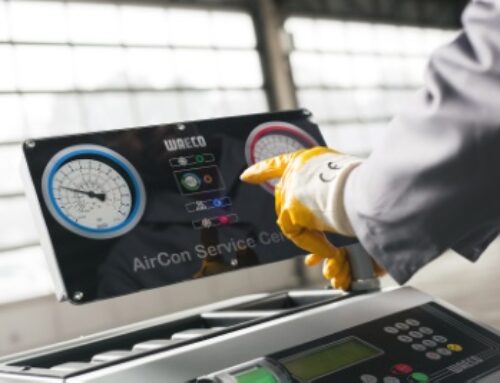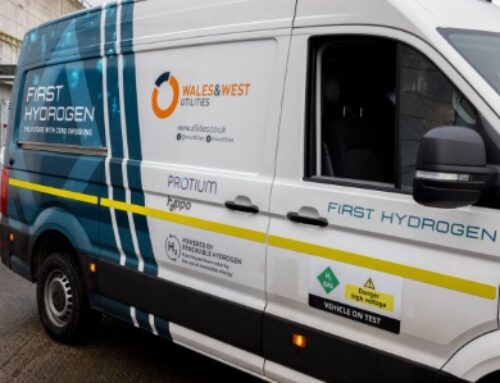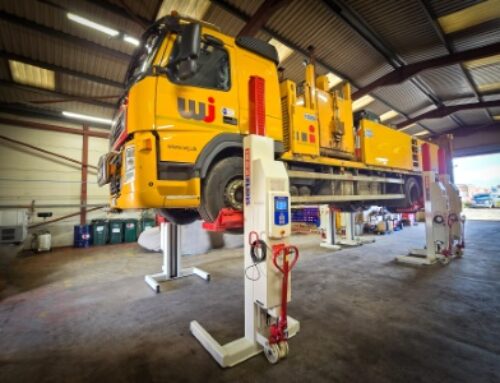Millbrook unveils new era in emissions testing
 Vehicle testing specialist Millbrook has outlined technical details of its new 4WD Variable Temperature Emissions Chamber (VTEC) facility, which will be opening this year.
Vehicle testing specialist Millbrook has outlined technical details of its new 4WD Variable Temperature Emissions Chamber (VTEC) facility, which will be opening this year.
Millbrook, which merged with the French automotive testing group UTAC CERAM in February, says the new facility is a centrepiece of the group’s vision for the future.
“In 1996, Millbrook opened the world’s first independently available climatic emissions test chamber for commercial vehicles,” said John Proctor, technical and special projects director at UTAC CERAM Millbrook.
“Since then, the original VTEC has proved an essential and reliable facility for customers, leading to the completion of more than 19,500 emissions tests.
“24 years on, however, the challenges facing today’s heavy-duty vehicle powertrain engineer are very different to when Millbrook installed the original VTEC.
“The introduction of the new 4WD (four-wheel drive) VTEC facility is therefore a fundamental step in ensuring that the UTAC CERAM Millbrook group remains at the leading edge of testing and development now and in the coming decades.”
The new VTEC is a heavy-duty climatic emissions chassis dynamomenter facility capable of handling vehicles with axle weights of up to 20 tonnes – over two and a half times more than the outgoing facility – and 4WD vehicles.
The emissions test facility is designed to accommodate climate-controlled testing for TfL emissions, CVRAS, Real Driving Emissions (RDE) simulation, development and product benchmark testing.
“Put simply, VTEC enables heavy-duty vehicle manufacturers to test internal combustion engine, electric vehicle and hydrogen fuel cell powertrains to determine energy consumption, range and energy efficiency – all under one roof,” said John.
“It is climatically controlled from -20°C to +50°C and is suitable for large commercial vehicles…
 “It offers power absorption of up to 1MW – more than four times that of the existing facility. It also has more than nine times the continuous torque capacity (68,000Nm) of the old facility and three times the inertia simulation (60,000kg). It is generally suited to larger vehicles, with a wheelbase of up to 8m.
“It offers power absorption of up to 1MW – more than four times that of the existing facility. It also has more than nine times the continuous torque capacity (68,000Nm) of the old facility and three times the inertia simulation (60,000kg). It is generally suited to larger vehicles, with a wheelbase of up to 8m.
“Added to this is the new VTEC’s double and tri-axle capability which enables engineers to test a wider variety of vehicles in a more representative manner.
“It also has a dedicated particulate matter (PM) filter weighing chamber, and a four-phase bag analysis system, enabling the running of significantly longer emissions test cycles than the original VTEC.”
The new VTEC has a number of applications for the commercial vehicle sector, John explains.
“VTEC’s increased capacity means that manufacturers will be able to determine the thermal stability of engines within large, 4WD vehicles through more representative drive cycles,” he said.
“They will also be able to more accurately prove performance and electric range of their vehicles. This is especially important when you consider the increasing trend towards manufacturers pursuing cleaner powertrain solutions.
“By making use of VTEC’s humidity control and wider temperature range, manufacturers will also gain the ability to carry out ambient temperature tests and prove that their vehicles de-mist and de-frost adequately.
“Truck manufacturers must also conduct testing of specific vehicle events, such as cold start testing. VTEC can facilitate such testing in an accurate and controlled environment.”











